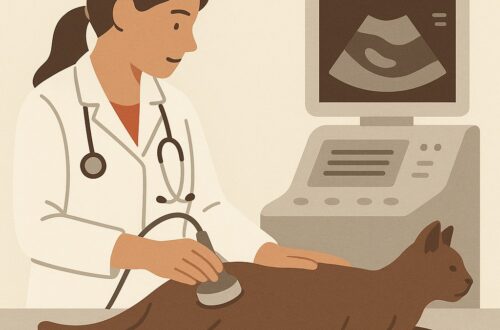Anal gland problems, especially impaction and abscesses, are common in pets. Unfortunately, our furry friends can also develop cancer of the anal glands too. In this week’s post I share important information about anal gland tumors in dogs, so I hope you find it helpful. Happy reading!

Anal glands – What are they?
The anal glands are two sacs inside the anus of dogs and cats located at the 4 o’clock and 8 o’clock positions. The anal glands lie between the internal and external anal sphincters, the muscles that keep feces inside the rectum until a pet defecates. These sacs normally fill with a smelly substance that can be thick and dark, clear and watery, and even chunky at times. All of these consistencies are normal. Currently the only discharge considered truly abnormal is one containing blood. A small tube (called a duct) that opens just inside the anus connects each sac to the outside.

What do anal gland tumors look like?
The most common cancer of the anal glands is adenocarcinoma (also called apocrine gland anal gland adenocarcinoma). Males and female dogs are equally affected by anal gland tumors. Any dog can develop cancers of the anal glands, but German shepherds, English cocker spaniels, dachshunds, Alaskan malamutes, and English springer spaniels are over-represented. The average age of affected dogs in ten years of age. Anal gland tumors are quite rate in cats.
Clinical signs of anal gland tumors are variable and may include:
- Swelling in the perianal region
- Excessive licking the anus
- Difficulty defecating
- Abnormally formed feces
- Blood on the surface of feces and/or around the anus
- Vocalization during defecation

Anal gland tumors are often associated with hypercalcemia or elevated blood calcium. When blood calcium rises, affected pets often urinate larger volumes more frequently. Subsequently, they also drink more water to compensate for their increased urination. Other clinical signs associated with elevated blood calcium include lethargy, vomiting, and/or reduced (or loss of) appetite.
How are they diagnosed?
Veterinarians will review a pet’s complete medical history and perform a complete physical examination. A rectal examination is an essential part of a physical examination, not just when an anal gland problem is suspected. There is a saying a veterinary medicine regarding rectal examinations in dogs:
There are only two reasons not to perform a rectal exam. No finger and no rectum.
If a veterinarian palpates an anal gland mass, further testing will be recommended, including:
- Blood & urine tests – to evaluate the health of major organs and check for hypercalcemia.
- Aspiration of the anal gland mass – a minimally invasive test that involves using a vaccine-sized needle to collect cells from the anal gland tumor. The cells should be submitted for evaluation by a board-certified veterinary clinical pathologist.
- Chest radiographs (x-rays) – to look for evidence of metastasis (cancer spread) in the lungs, as well as other heart and/or lung problems.
- Abdominal sonography or computed tomography (CT scan) – to look for evidence of metastasis in the abdominal cavity, particularly to lymph nodes and the liver. Lymph nodes are enlarged in ~50% of affected dogs.

How are they treated?
Surgery is the initial treatment of choice for dogs with anal gland tumors. Surgical removal has consistently been shown to positively influence quality of life and survival time in affected dogs. Pets don’t need their anal glands, so removing them when a mass is present is common sense. If lymph nodes are enlarged within the abdominal cavity, then they should be surgically removed too because this intervention is associated with longer median survival times. Temporary hospitalization prior to surgery may be recommended if organ dysfunction and/or hypercalcemia is documented.
Anal gland adenocarcinoma is both locally invasive and highly metastatic. Local recurrence with surgery alone happens within a median period of 10 months in 20-50% of affected dogs. For this reason, adjuvant therapy with radiation therapy, electrochemotherapy, and/or chemotherapy should be considered. Median survival times vary depending on on the type of post-surgical intervention; reported published times are 422-703 days. Pet owners are strongly encouraged to consult with a board-certified veterinary oncologist to determine the best post-surgical treatment plan for their dogs.
The take-away message about anal gland tumors in pets…
Anal gland tumors are aggressive tumors arising from special cells in the anal sacs. Surgery removal of affected glands is recommended as soon as possible. Adjuvant therapies after surgery – including chemotherapy and radiation therapy – can improve quality and length of life.
To find a board-certified veterinary surgeon, please visit the American College of Veterinary Surgeons.
To find a board-certified veterinary oncologist, please visit the American College of Veterinary Internal Medicine.
Wishing you wet-nosed kisses,
CriticalCareDVM





